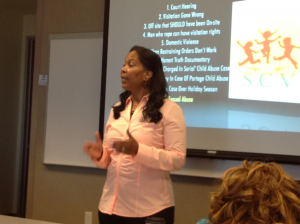Understanding the Victim of Domestic Violence
It is important for visit Providers to have an understanding of common victim characteristics and behaviors in order to be able to effectively facilitate visits:
- Domestic violence victims can be found in all age ranges, in all racial/ethnic backgrounds, and in all socioeconomic, educational, occupational, and religious groups.
- Some, but not all, of domestic violence victims have been abused as children or in previous adult relationships.
- As part of their abuse experience, many victims have become isolated from friends, families, or their normal activities because of their perpetrator’s controlling behavior.
- Victims of domestic violence experience traumatic effects from their experience including:
- denial or minimization of the abuse;
- hyper vigilance/suspiciousness;
- anxiety;
- difficulty concentrating;
- shame;
- substance abuse to self-medicate;
- low self-esteem;
- numbing or depression;
- anger; and
- impaired functioning in occupational, social, and parental roles.
These emotional reactions are normal, but they may result in a visit Provider mistakenly assuming it is the victim’s fault – instead of the perpetrator’s fault – that visitation is ordered. Understanding that these victim reactions are common will prevent visit Providers from inaccurately assigning psycho- pathological labels to the victim, such as “she’s crazy,” “she’s hysterical,” etc.
Victims of domestic violence engage in a variety of strategies to escape abuse:
- Legal methods such as obtaining injunctions, requesting orders for supervised visitation/Provider exchanges, calling law enforcement, proceeding with prosecution of perpetrator, or seeking separation or divorce.
- Formal requests for help from social service agencies, religious, domestic violence shelters, or other groups, including supervised visitation programs.
- Escaping to a domestic violence shelter or relocating.
- Using various methods of self-defense.
Because of the perpetrator’s undermining of the victim and the resulting decreased parenting capacity, some mothers who are in domestic violence relationships are at risk of harming or neglecting their children. Research suggests that by keeping abused mothers safe, children’s safety can be increased.



Follow Us!